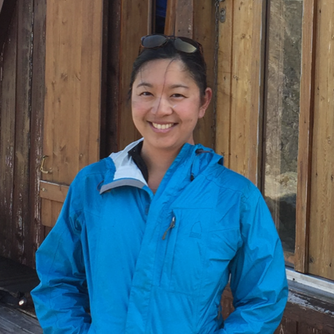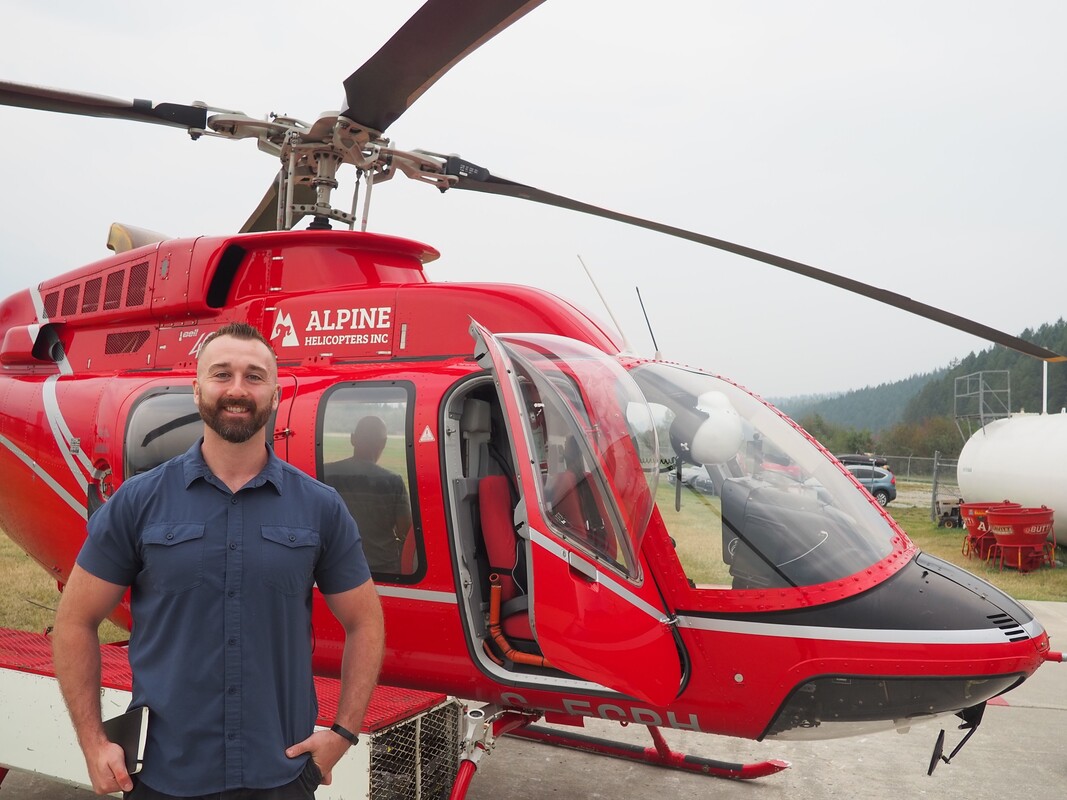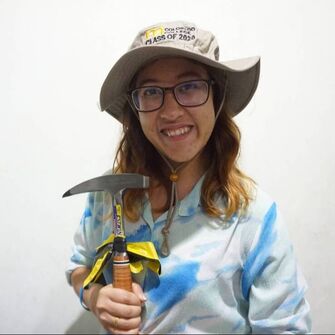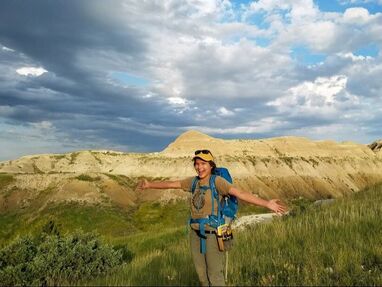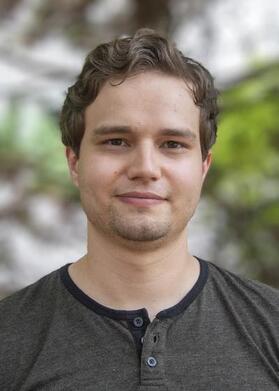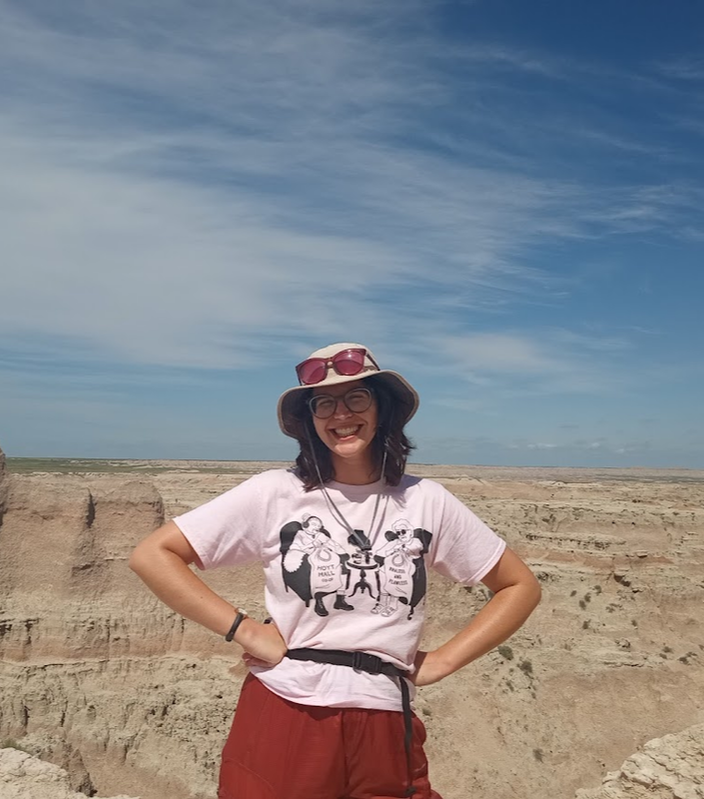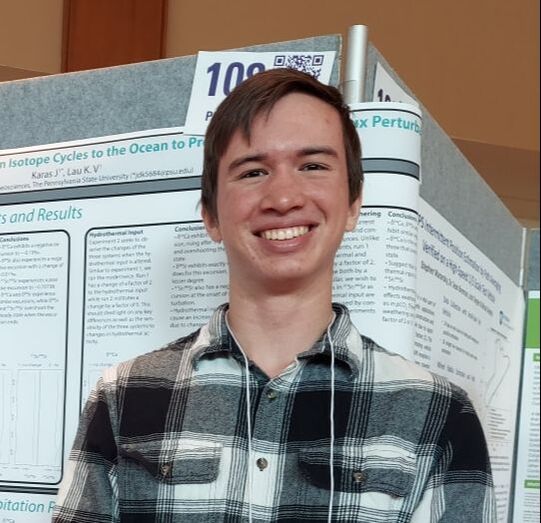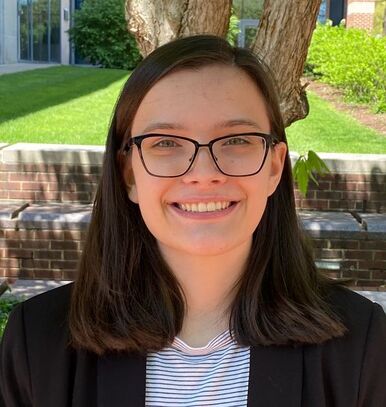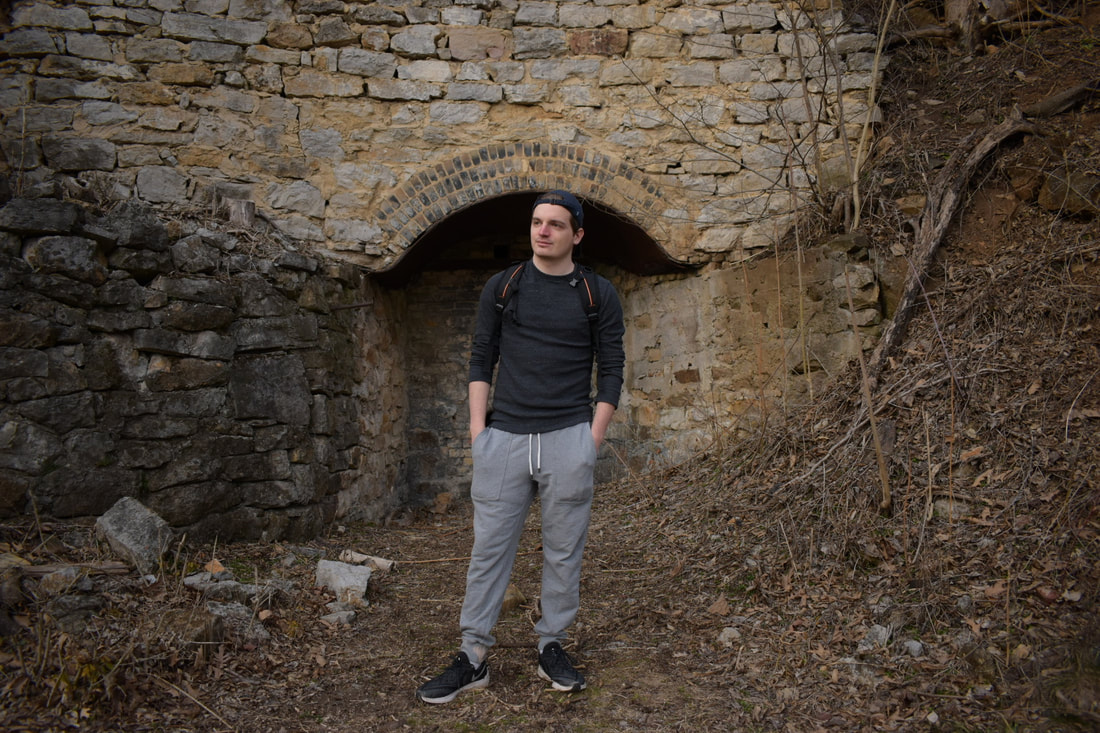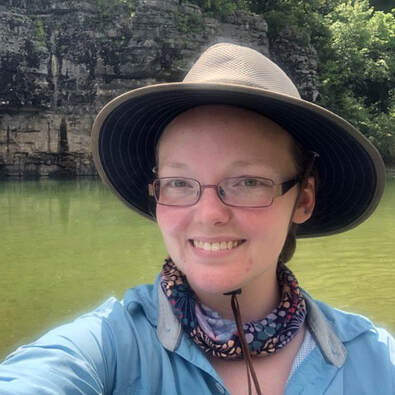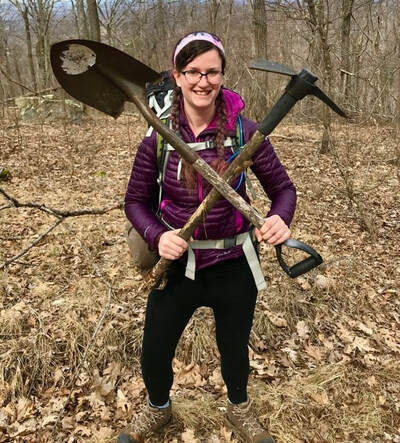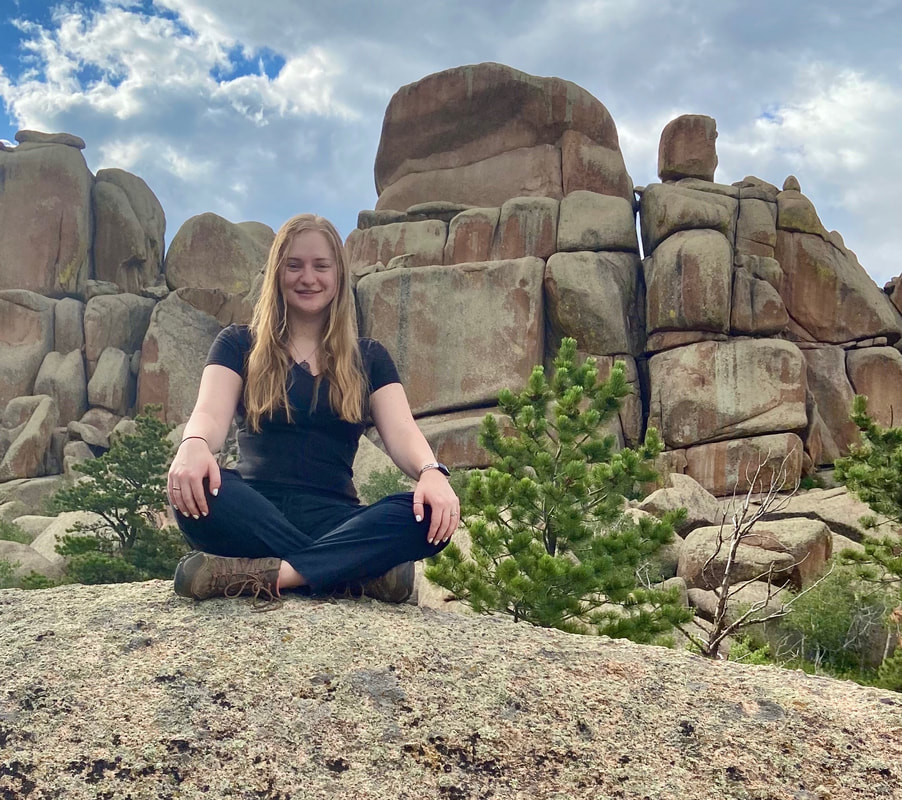Kimberly Lau, Ph.D.she/her
Assistant Professor kvlau [at] psu.edu Postdoc, University of California, Riverside Ph.D., Stanford University B.S., Yale University Read more about Kim here. |
Cole McCormick, Ph.D.Postdoctoral Scholar
cole.mccormick [at] psu.edu Ph.D., University of Manchester M.S., University of Alberta B.S., University of Alberta LinkedIn page Google Scholar I am interested in all things dolomite, with experience ranging from low-temperature (<50°C) dolomitization in isolated carbonate platforms to high-temperature (>100°C) dolomitization in structurally controlled settings. For my Ph.D. at The University of Manchester, I employed a wide range of geological techniques (e.g., hyperspectral imaging, rock deformation experiments, and carbonate geochemistry) to evaluate how cement-supported breccias, fractures, and zebra textures form in fault-controlled, hydrothermal dolomite bodies. As a post-doctoral scholar at The Pennsylvania State University, I am conducting a series of replacement dolomitization experiments in order to constrain partitioning coefficients and isotopic fractionation factors for uranium and δ238U during the conversion of aragonite/calcite to dolomite. |
Watsawan (Fai) Chanchai/she-her-hers/
Graduate student wzc5325 [at] psu.edu B.A. with distinction in Geology from Colorado College, 2020 I was born and raised in Phatthalung, Thailand where food and weather are incomparably HOT. After college, I found out that rocks are COOL (-est), and thus I commit to becoming a life-long geology explorer. I am interested in redox proxies, fossils, and biogeochemical cycles to understand life evolution and chemical perturbations of oceans throughout Earth history. My ongoing research focuses on geochemical analyses to interpret paleoenvironmental conditions during the Ediacaran–Cambrian transition (~580–530 Ma). I am enthusiastic about science education and social justice leading me to advocate DEI for underrepresented groups, especially women in STEM. |
|
Kayla Irizarry
Graduate student M.S., Penn State University B.S., Brooklyn College My interest in the geosciences, broadly, is to understand how evolutionary trends are influenced by environmental factors and bias introduced by the sedimentary record. I hope to achieve this by creating datasets which combine geochemical, paleontological, and stratigraphic data in a meaningful way. My master’s thesis was focused on the macroevolutionary trends of rhynchonelliform brachiopods, with a specific focus on the environmental preference of this group during the Cambrian. My undergraduate senior thesis was focused on understanding the depositional processes of two unconsolidated- sedimentary deposits at the Cretaceous-Paleogene boundary in Brazos, Texas. For my Ph.D. I plan to explore how persistently low oxygen condition in Cambrian oceans affected fauna, using paleo physiology to identify selective extinction and direct redox proxies to reconstruct local oxygen conditions. My other interests are community organizing, writing poetry and short stories, cooking, and gardening. |
|
Adam Stone
Graduate student ats5482 [at] psu.edu B.Sc., Astronomy & Astrophysics, Penn State Having recently earned a Bachelor’s in astronomy and astrophysics, I am new to geoscience. In undergrad, I worked on X-ray supernova remnant spectroscopy, sounding rocket instrumentation, and pulsar scintillation measurements. Geoscience is a substantial shift for me, but I’ve had a longstanding interest in planetary science and exoplanets, which is what pulled me into the program. Now, I am working on a model to assess the habitability of ocean-covered exoplanets in the context of their seafloor geochemistry. I am co-advised by Kim Lau and Brad Foley. |
Fran Meyershe/her/hers
Graduate student fmm5327 [at] psu.edu B.A., University of California, Berkeley I'm inspired by what geochemical tools we can use and how reliable they are for interpreting times of environmental change in Earth's past. For my PhD, I will be exploring uranium reduction pathways and speciation in marine rocks and modern sediments. I plan to use this research to assess and strengthen the use of U isotopes to interpret paleoredox conditions. In previous lab groups, I focused on temperature trends during the Ordovician (oxygen isotopes from conodont microfossils) and Tonian periods (carbonate clumped isotopes). When I'm not doing rock things, I like to knit, birdwatch, and play my Nintendo Switch. |
Gavin De Mars
Senior thesis student
B.S., Geobiology
B.S., Geobiology
Lab Alumni
Abigayle WardUndergraduate researcher
B.S. chemistry, Penn State University 2022 (now a PhD in soil science at UConn) My journey to a B.S. in chemistry has led me to realize a passion for plants, soils, and global biogeochemistry. I have been helping Dr. Lau process ancient reef samples in order to determine their major, minor, and trace elemental concentrations. The broader goal of the project is to determine whether diagenesis will impact the geochemistry of rock lithofacies in these ancient reef samples. In my free time, I enjoy hiking and gardening. |
Chelsie Bowman, Ph.D.(she/her)
Postdoctoral Scholar (now a Postdoc at Florida State) Ph.D. in Geology, Florida State University M.S. in Geology, Florida State University B.S. in Environmental Science & B.A. in Environmental Studies, Florida State University Earth history and the natural world have always fascinated me, but my love for geology began with my first field excursion - a weekend trip to central Alabama during my first undergraduate geology course. Since then I have had many opportunities to study and explore the geologic past. As an M.S. student I used stable carbon isotopes of fossilized tooth enamel to reconstruct the diets and habitats of middle Miocene (8-12 Ma) mammals. During my Ph.D. I used a variety of geochemical and sedimentary proxies to reconstruct ancient ocean redox chemistry on local and global scales during the late Silurian Lau/Kozlowskii extinction event (~425 Ma). Now as a postdoc I will be researching nutrient cycling and redox geochemistry during the early to middle Permian in the Phosphoria Basin using geochemical proxies and modeling. I am passionate about geoscience education and outreach, as well as the inclusion of underrepresented groups (LGBTQ+, BIPOC) in the earth sciences. |
Kaitlin TaylorM.S. 2022 (now a Chemist at SCA Pharma)
B.S., Central Connecticut State University From a young age I was fascinated with the natural world and exploring the connections between the climate, plants, and landscape. While living in the Colorado mountains, I gained an even greater appreciation for geology and the stories the rocks could provide. My undergraduate research focused on the geochemistry of a lamprophyre dike intruding into CAMP basalts in the Connecticut valley as well as soil chemistry, lacustrine sediments, and the geomorphology surrounding a Gilbert-type delta at the southern end of glacial Lake Hitchcock. I am interested in using geochemistry to uncover information about our climate in both the present and the past and I am excited to begin studying Li isotopes in brachiopod shells across the Permian-Triassic boundary to better understand the 10 million year delay in the recovery from the mass extinction. |
Brianna McMaster SmithUndergraduate researcher (now a M.S. student at Northern Arizona University)
[email protected] B.S. candidate, University of Wyoming Wyoming’s unique landscapes, from the Teton Mtns. and Yellowstone National Park, to the Hartville Uplift where my family owns a historical Geologist’s cabin, serve as the inspiration that led me to study the field of Geology at the University of Wyoming. My undergraduate research investigates trace metals and paleo-biogeochemistry of the Permian Phosphoria Fm which partially lies in Western Wyoming. Following completion of my B.S., I will pursue graduate school (2021). I am also interested in botany, ecology, and data science; I enjoy photography, American Sign Language, and camping. |
Eliza Goodell, Oberlin College, 2021 Climate REU
